I knelt. As I brought my face closer to the small square glass pane, the image of a jumble of ribs, limbs and skulls emerged with stark clarity. The innocuous window framed a haunting tableau of mixed German and French soldiers’ bones, a macabre mosaic of skeletons intertwined, forever bound by the anguish of war and a shared, tumultuous history. Each one screamed a silent testament to the relentless cruelty of war.
In the shadow of Verdun, a place where the very earth seemed to hold the scars of unimaginable suffering, I embarked on no ordinary excursion; it was a descent into the abyss of history, where the annals of World War I had etched their darkest chapters. Verdun, a name that echoed with the agonizing cries of the past, was a place where humanity had reached the darkest depths of conflict.
The Douaumont Ossuary
The diminutive windows were situated only at the base of this monumental structure. Visitors stooped and knelt, as if bowing before the weighty annals of history. The act of lowering our bodies to their level felt like an act of profound humility, a physical demonstration of the respect owed to those who had given their lives.
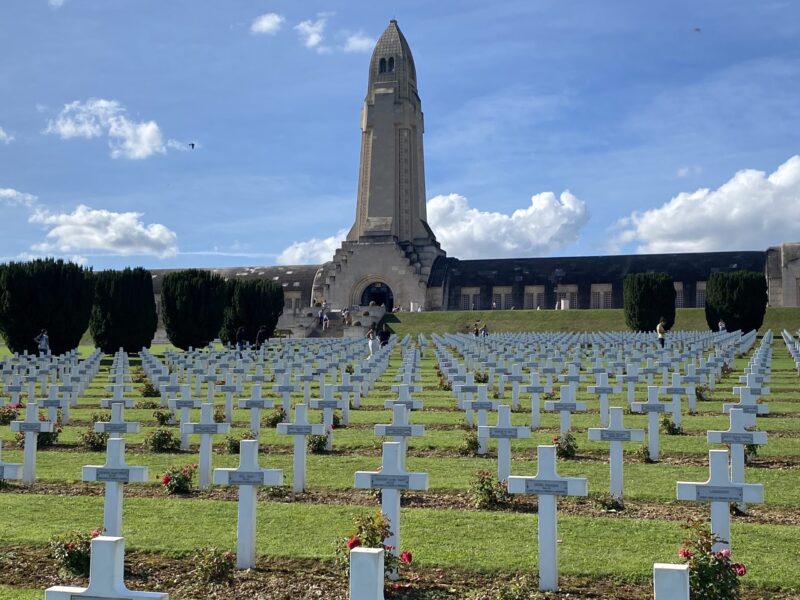
The Douaumont Ossuary, a memorial containing the skeletal
remains of soldiers who died on the battlefield during the
Battle of Verdun in World War I. Located in Douaumont-
Vaux, France, within the Verdun battlefield.
Kneeling, my gaze was fixed through the small square glass pane. In that vulnerable position, I was confronted with the universal vulnerability of humanity. War knows no boundaries; it takes lives indiscriminately. It doesn’t discriminate based on age, nationality, or creed. The bones, once belonging to young men from opposing sides, lay intermingled in a macabre dance of death. They were stripped of any uniforms or insignia, now rested together in eerie unity. It was a visceral reminder that in death, nationality and ideology held no meaning. Only the human form, fragile and vulnerable, remained. We are all, at our core, fragile beings, susceptible to the ravages of conflict.
Seeing my reflection in the glass also added an eerie dimension to the moment. It was as if, for an instant, I could glimpse myself as one among them, lifeless. In that moment, I realised that the bones before me were not mere relics of history; they were a mirror reflecting our own mortality and the solemn duty we bear to pay homage to those who came before us and create a world where the lessons of history were heeded and peace and understanding prevailed over conflict. It was as if the ossuary itself had become a silent witness to the absurdity of war. These bones, which had once borne the weight of soldiers’ hopes, dreams, and fears, now lay stripped of identity. In their tangled state, they embodied the tragic consequences of war, where the lines between friend and foe blur into insignificance. All were equal in their fate.
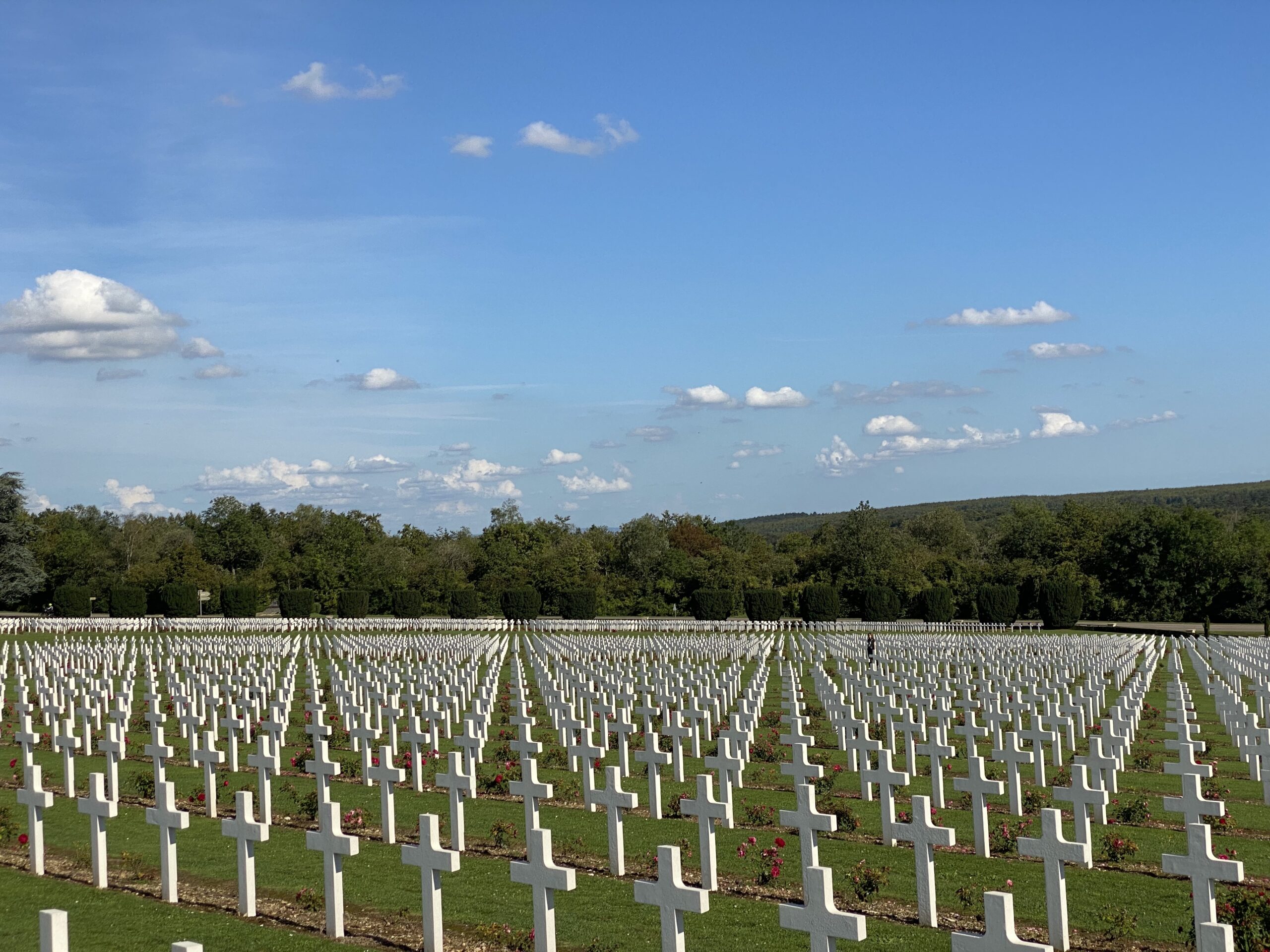
The cemetery at the foot of the Douaumont Ossuary
The Fort of Verdun
The Fort of Verdun, an ancient sentinel of sacrifice, beckoned with its dark and weathered façade. As I ventured into its depths, my footsteps became a whispered dialogue with the past and each step was a plunge into the abyss of time. I stood in its dark, cold and humid passageways, like a lost explorer navigating the caverns of a forgotten world.
The fortress itself seemed to exhale the echoes of a time when humanity faced its darkest hours. The ceilings, resembling the inner chambers of ancient caves, dripped with stalactites that hung like jagged teeth. A drop of water, like a mournful dirge, fell into my hair. Water vapour could not escape the fort, for ventilation holes had to be sealed lest toxic gases were to enter. Water on the floor splashed gently under my shoes—it was an eternal prisoner, haunting the fort with tales of suffocation and sacrifice. It was as though the fort itself wept, its tears echoing the sorrowful tales of the countless souls who had tread these same paths in the darkest days of war, for the suffering it had witnessed, for the eternal grief that clung to these stone walls. The air, cold and humid, was heavy with the weight of history.
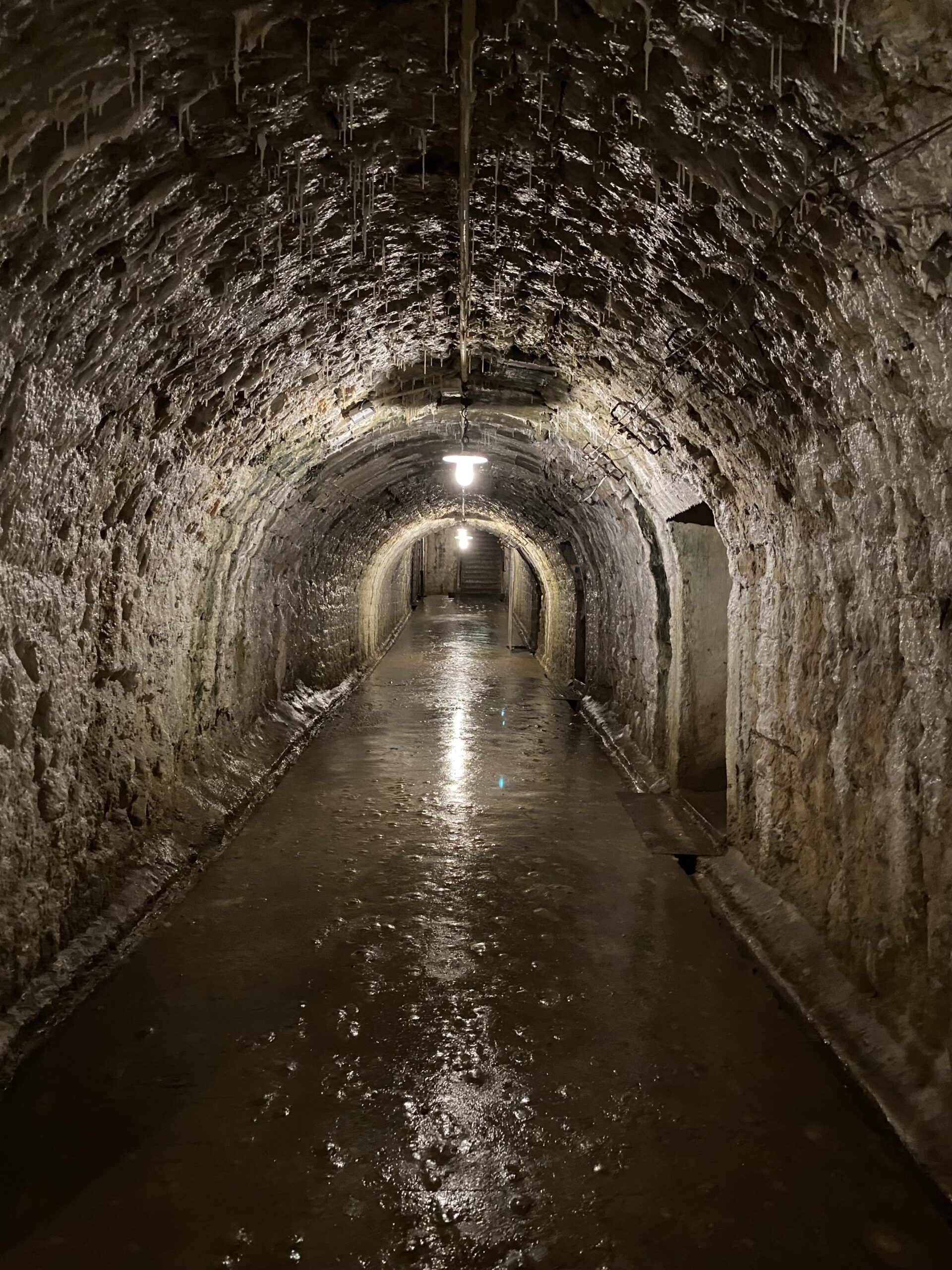
Inside the Fort
Walking past closed doors, I could not shake the feeling that the dead lingered just beyond, like silent phantoms waiting to share their stories. These doors, like heavy lids closing on coffins, held secrets, memories and unspoken horrors that still clung to the fortress’s chambers. In this chilling labyrinth, I felt as though I had stepped into a time capsule, a place where the past and present coexisted in eerie harmony. The fort’s passageways were a testament to the relentless passage of time, where the cold, damp walls seemed to whisper tales of suffering and sacrifice to anyone who dared to listen.
It is easy, though, not to listen; step outside the fort and you will enter an oasis of serenity. Nature, like a compassionate artist, had painted the landscape with a vibrant green brush, as if to soothe the scars of history with the balm of peace.
The surrounding grass, now lush and unyielding, seemed to be nature’s quilt, lovingly covering the landscape’s rugged contours, as if to hide the painful memories beneath. It was like the fort had reluctantly yielded to the relentless march of nature, trading its cloak of despair for one of renewal. The grass, like a healing poultice, had concealed the scars and shrapnel wounds of a bygone era.
The grass-covered trenches, once home to unspeakable horrors, were now soft and inviting, like nature’s cradle embracing the fallen. Dandelions, buttercups and daisies danced in the breeze. It was a breeze that caressed your face as you stood atop the fort, a breeze that gently rusted the grass like a lullaby sung of resilience and rebirth by a chorus of forgotten voices finding their harmony once more. Its transformation from a crucible of destruction to a crucible of reconciliation stood as a testament to the resilience of the soul, capable of finding solace and hope even amidst the harshest trials.
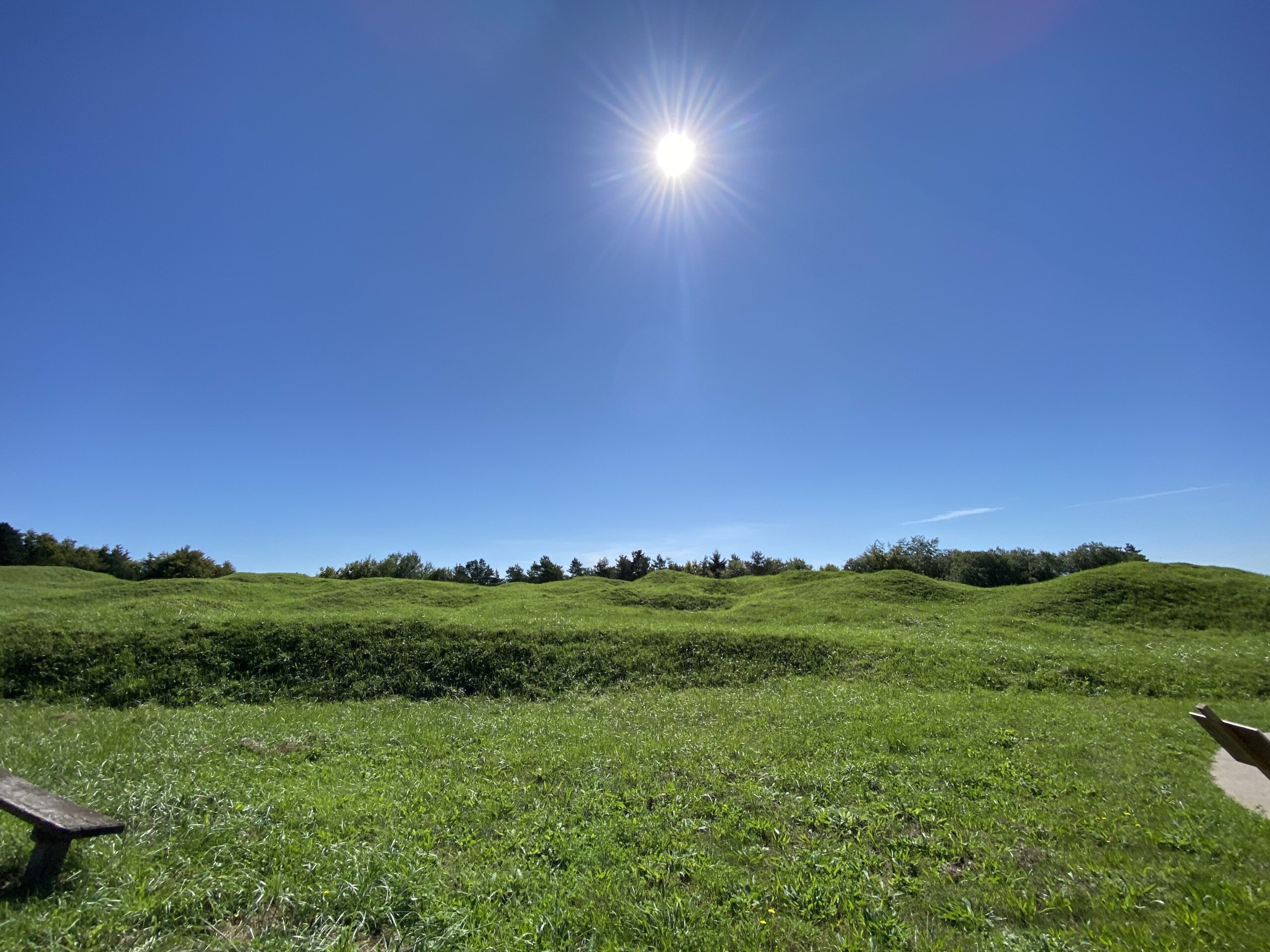
Trenches, grass, and forgiveness
I see the Fort of Verdun, in its newfound beauty and tranquillity, not just as a site of tragedy, but as a testament to the indomitable human spirit. Verdun has embraced its role in history, forging a path toward understanding and healing. Let us remember Verdun not for its pain, but for its enduring call for peace. Verdun reminds that our shared humanity must always be our guiding light and it is our choice to listen.
In the quietude of Verdun’s fields, let the whispers of peace linger on.
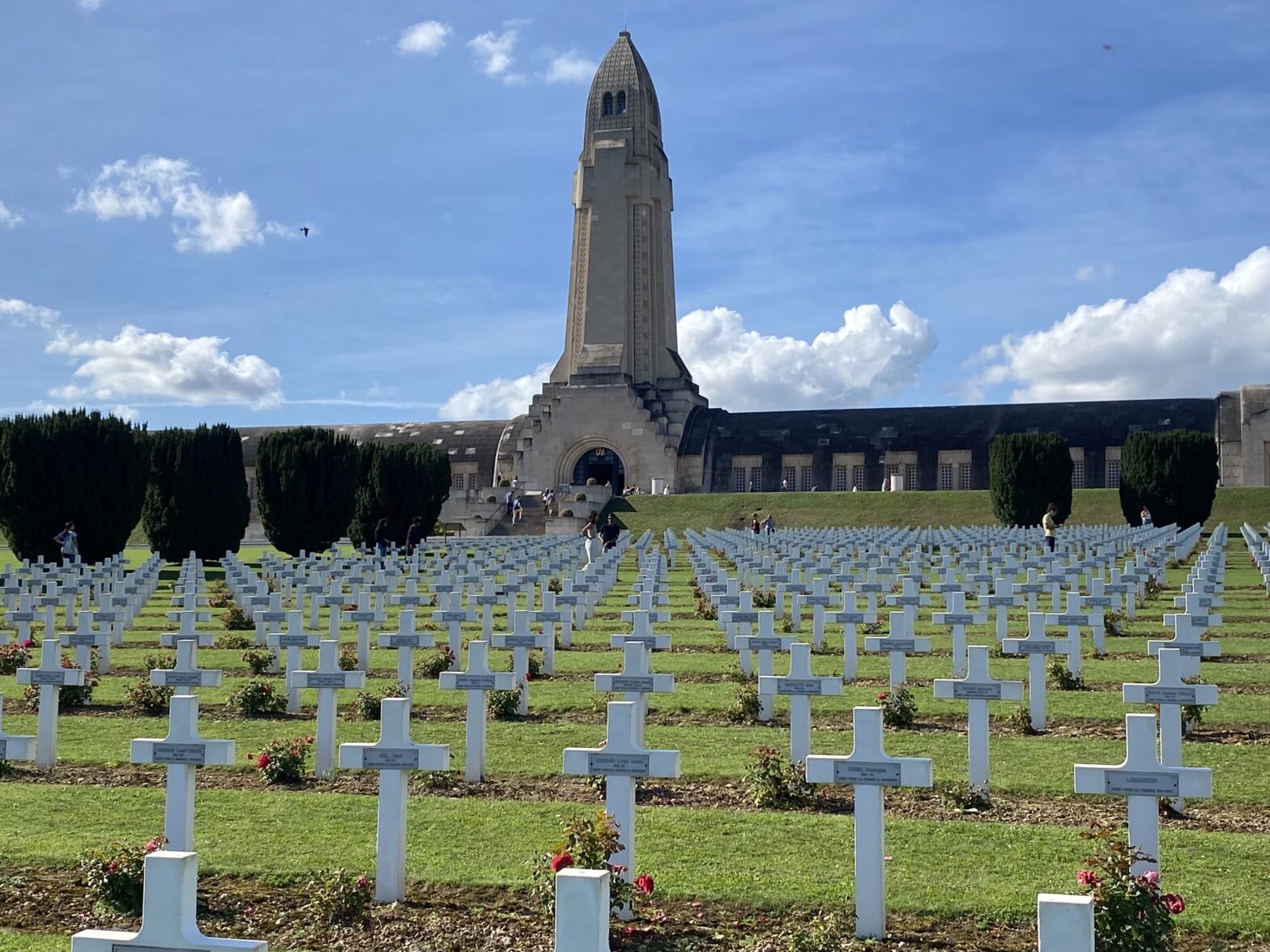
One comment